Since the dawn of history, humans have made great use of leather. They’ve worn it, walked on it, sat on it, wrote on it. Turning animal skin into a durable product requires processing, and in primitive times, hides were tanned using animal brains, dung, urine, ash, and smoke. As our understanding of chemistry evolved, these materials were replaced by vegetable, mineral, and then nonorganic ingredients.
Today, synthetic materials have replaced leather in many shoes and boots; nylon and reinforced cotton have replaced leather in coats; and a cow hide is more likely to become gelatin than it is a saddle. All of this can make it hard to remember that at one time the manufacturing of leather goods was an economic engine sustaining many communities in the northeastern United States.
From a forestry perspective, it’s also worth remembering that eastern hemlock (Tsuga Canadensis) played a crucial role in the early hide-tanning industry. In the industry’s 19th century heyday, as many as 64 tanneries were operating in the Catskill region of New York, and estimates hold that 70 million hemlock trees were harvested for their bark. This story played out across the Northeast and helped shape the forest that we know today.
The tanning process
In colonial America, the creation of leather from animal skins was a crucial part of life. Back then, almost every farm and homestead prepared its own leather from slaughtered domestic or wild animals. With the rise of cities and the specialization of work, leather tanning quickly developed into its own industry.
The Dutch built New York’s first large scale tannery in 1638 in New Amsterdam, in an area later known as “The Swamp” near the present-day Brooklyn Bridge. This was an ideal location because hides could be shipped in from foreign sources and water was readily available. The area soon became concentrated with tanneries and leather-goods manufacturers, gaining its name from the large quantities of wastewater filled with organic matter and the constant odor of curing animal hides. What New York City lacked, however, were large groves of hemlock, which grew farther upriver in the Catskills, Adirondacks, New England, and Pennsylvania. Coupled with rising displeasure with the horrible conditions of “The Swamp,” this led to the development of tanneries across much of the Northeast.
In the 19th century, the process to convert animal hides into useable leather involved several steps. After the hide was taken off the animal, it was covered with salt, which simply acted as a preservative. After being shipped to a tannery, the hide was soaked in water until it was soft and any last pieces of flesh and fat were removed. Next, hides were soaked in lime for several days. The lime solution dissolved the hair and epidermis and caused the hide to swell, which opened the fiber bundles in the dermis layer for later penetration by the tanning material. After swelling, the hides were scraped, neutralized with vinegar, shaved into uniform thickness, and often split in half lengthwise for ease of handling.
At this point, the hides were ready for tanning, a process that involved soaking the hides in vats of tannic acid, a colorless – though not odorless – astringent made from plant tannins. While historically many plant species have been used to make tannic acid, hemlock bark was the preferred source of tannins in the Northeast because of its high tannin content of 10-12 percent. Tannins bind the collagen proteins in the leather, making them less water-soluble and more resistant to decomposition. Hemlock tannins give leather a distinctive, deep reddish-brown color. Other tree species, such as oak, the mainstay of the southern tanning industry, produce a lighter, yellowish-colored leather. In the early days of the industry, a hide spent about six months curing in the bark solution.
Using hemlock for tanbark
Hemlock is native to North America, forming dense stands up and down the eastern seaboard. It is often the dominant conifer along streambanks and the lower slopes of hillsides. It will grow in dense shade and is a major component of many forests, growing alongside maple, cherry, and white pine. It can be very slow growing, as in swamps, or grow rapidly in open areas with well-drained soil, where it often reaches heights of 70 to 100 feet. Hemlock trees can live for over 250 years, or in very rare cases, over 800 years.
Early tanbark harvesters obtained hemlock bark in two relatively straightforward ways. Some girdled trees in the spring when the bark was loose, or “slipping,” then returned later to harvest the loosened bark “on the stump” – an act that left gleaming, barkless trees beneath the dark hemlock canopy. The more common method was to cut down the tree and then peel the bark off as far as practicable, cutting it into four-foot strips. The tree’s trunk was sometimes sawn into boards, but since hemlock is inferior to white pine for building purposes, lots of wood was left to rot in the forest. The bark was the only desired product.
After the bark was removed, it was placed on the ground with the inner, or flesh, side facing up to hasten drying and prevent formation of mold. Bark was then stacked in large piles off the ground for further drying and to await transport to the tannery. Shipping long distance in the 1800s was costly. Bark was heavy and bulky and had to be hand-loaded onto wagons or sleds pulled by horses to the tannery. In contrast, salted hides were lighter and easier to maneuver, so the hides were, in effect, brought to the hemlock, and tanneries were built close to hemlock stands.
At the tannery, conveniently sited on rivers or lakes, the bark was ground or shredded and placed in a series of hot-water filled tubs. Using a passive method, it took about four days for the tannins to leach out of the bark – steam infusions halved the time. The resulting tanning liquor was then circulated through the tanning vats in increasingly acidic solutions. Spent bark was dried and used for fuel to heat the vats.
The rise of tanneries
In the mid 1800s, fortunes were made and lost as entrepreneurs took advantage of the lucrative trade in leather. Tanneries spurred the development of communities, some of which still exist today. William Edwards was the first large-scale tanner in the Catskills. Raised in Massachusetts, where he had made and lost several fortunes in the tanning business, Edwards built a tannery in 1817 on the Schoharie Kill, at what is now the village of Hunter. Business was good, but Edwards expanded too quickly and took on too much debt. In 1839, a mere 20 years after starting, Edwards was once again in dire straits, filing for bankruptcy and closing the plant. In spite of his flamboyant behavior, he did bring several mechanical innovations into the industry, including a hide mill that was used to soften hides and a roller mill that was used for finishing sole leather.
Soon, other towns in the Catskills developed around the industry. Tannersville, today a popular vacation spot, was originally a home for many of the immigrant settlers who found work harvesting hemlock and working in the local tanneries. Rufus Palen constructed a tannery at the present day Palenville. Zadock Pratt established the largest tannery in the Catskills, and the town of Prattsville survives today, though the tannery lasted only 20 years (1825-1845). During that short time, about 2,000 people lived in Prattsville and were employed at Pratt’s tannery. In 1868, an estimated two million hides were tanned in Sullivan, Greene, and Delaware counties.
The local forests soon felt the effect of the tanbark rush. Hemlock stands were quickly cleared, bark stripped, and most of the wood left to rot. Historical texts state that two men could fell trees and peel two or three cords of hemlock bark per day. Bob Steuding, in his book The Heart of the Catskills, estimates that in its 20-year history, the Pratt tannery alone used 100,000 cords of hemlock bark from an estimated 400,000 trees.
When the easily accessible hemlock stands in the Catskills were exhausted, tanners looked to the Adirondack foothills for further supplies. Here, water was plentiful, and the Erie Canal and emerging railroads facilitated the shipment of both hides and leather. In wet areas, hemlock logs were used to make plank roads on which a horse could pull the heavy wagons or winter sleds loaded with bark. Similar situations existed in New England, where early tanneries near the seacoast gave way to newer ones farther up into the mountains. In all areas, communities sprang up around the tanneries. In Hides, Hemlocks and Adirondack History, Barbara McMartin wrote that the Adirondack region had 153 tanneries in 1850. By 1880, the number had shrunk to 112, of which roughly half were also large manufacturers of finished leather goods. Johnstown and Gloversville still retain some of this leather manufacturing, although the tanneries have long since disappeared. Tanneries operated in almost every county in northern New York. Major concentrations could be found along the Black River and West Canada Creek in Warren and Saratoga Counties and as far north as Essex County.
Life in a tannery town was tough. The work was hard manual labor. Living next to a tannery meant the constant stench of curing leather and stagnant pools of waste material. Streams became heavily polluted as tanning liquors, lime solutions, flesh, and hair were discharged directly into them. Hillsides were stripped of hemlock. On the other hand, the tanneries provided a livelihood, often for immigrants, and gave local farmers a market for the hides of slaughtered animals. Some of the tannery workers owned farms and worked in the tanneries part time or seasonally. Others lived in boardinghouses at the tanneries, where they worked 12-hour days with only Sundays off. Besides the men directly employed at the mill, the industry indirectly employed many others, including the bark peelers, who sold their bark by the cord or contracted their labor by the day. The bark peelers would set up camps in the forest during the spring peeling season and strip trees from dawn until dusk.
An industry in decline
By the 1900s, the tanning industry was changing and people’s attitudes towards heavily polluted streams and obnoxious odors were also changing. In the coming years, many factors would combine to spell the end of the hemlock tanning industry. The depletion of accessible hemlock was an important one. This was overshadowed, however, by better transportation by rail and highway that lowered the cost of shipping bark and freed tanneries from locating close to a bark supply. Beef farming also consolidated and moved west, which increased shipping costs for hides. Tanneries began to import bark from tropical species, yielding leathers with different colors and properties that suited the changing tastes of consumers. Chromium, oils, aldehydes, and synthetics began to replace plant tannins, and these chemical processes tanned hides much more quickly than the tree-bark method. The mechanization of manufacturing placed leather tanning, with its heavy dependence on manual labor, at a disadvantage. The economic conditions of the late 1800s were another reason for the demise of the tanning industry in the Northeast. Depressions and skepticism had set in, capital was harder to obtain, and businesses were closing. Although some plants in New Jersey used bark until the 1920s, the hemlock bark-tanning industry had largely ended by the beginning of the 20th century.
And what happened to the hemlock? Early writers saw denuded hillsides, with rotting hemlock trees stripped of their bark, and bitterly lamented the destruction of majestic hemlock forests that had stood for hundreds of years. Their fear fed into the popular view, at the beginning of the 20th century, that the country had lost its forests forever. Indeed, hemlock forests that were ruthlessly clearcut did not regenerate quickly. Many tanneries left eroded soil, silted streams, and sometimes piles of hemlock bark rotting in the woods. On rare occasions, one can still see the remains of these abandoned bark piles.
Despite all this, hemlock came back. Today hemlock timber is harvested for lumber and wood pulp. Although the wood is difficult to finish, in a rough state it makes good construction timber. Hemlock’s use for wood pulp is a fairly recent development, but Finch Paper Co. in Glens Falls, New York, has based its entire paper-making operations on hemlock, which is much cheaper than other species and produces paper of good quality. Hemlock from New York and New England is also going to Canada for both pulpwood and lumber.
Today, one can travel almost any road in Pennsylvania, New York, and across New England and spot the distinctive hemlock trees peeking out of a mixed northern hardwood forest. Hemlock thrives in moist areas, where it’s found in almost pure stands – its dense canopy blotting out the sun and sheltering mosses and lichens, brook trout and salamanders, among other species. A hemlock swamp is a familiar sight to anyone who has hunted deer or trekked through our woods and mountain areas. That the hemlock has returned is a testament to the inherent biological ability of the species to survive.


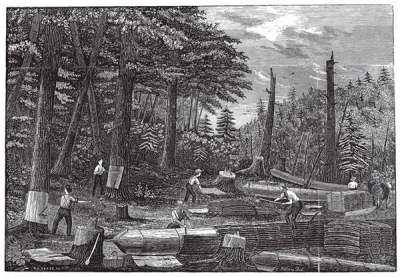
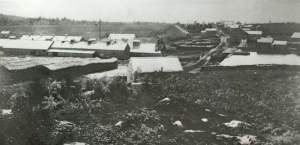
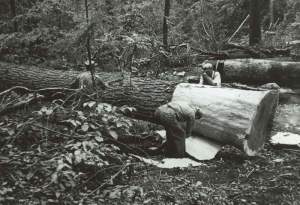
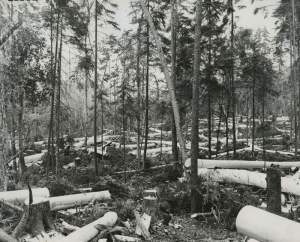
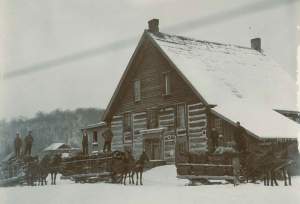
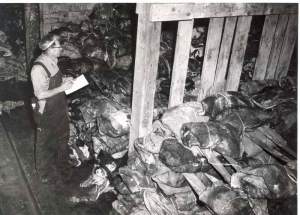
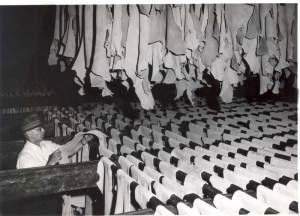
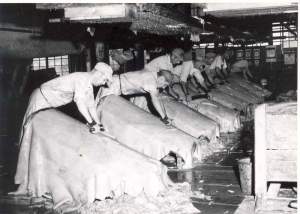
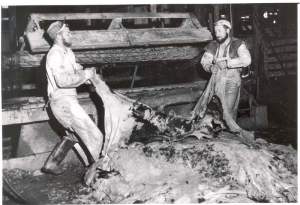
Discussion *